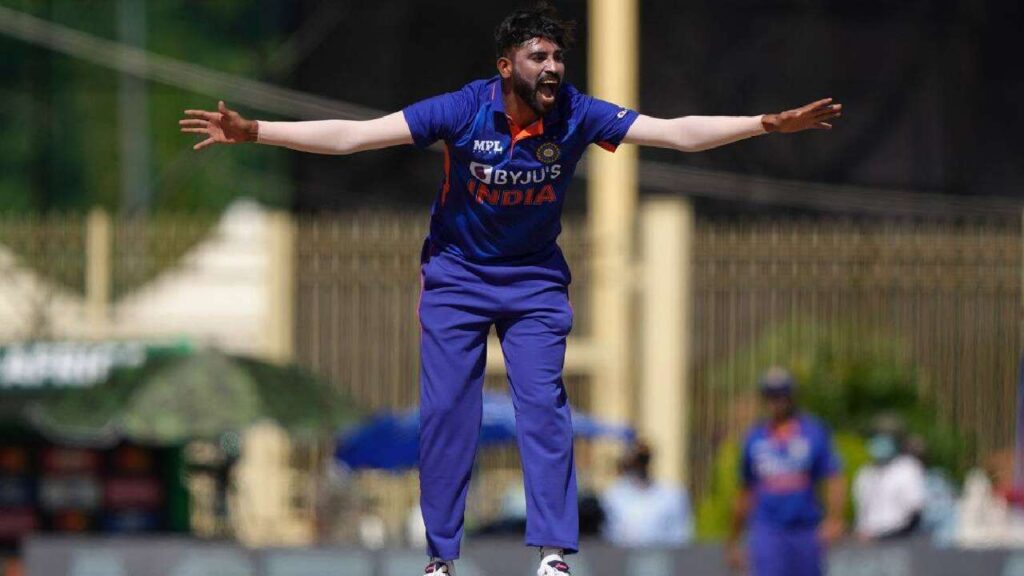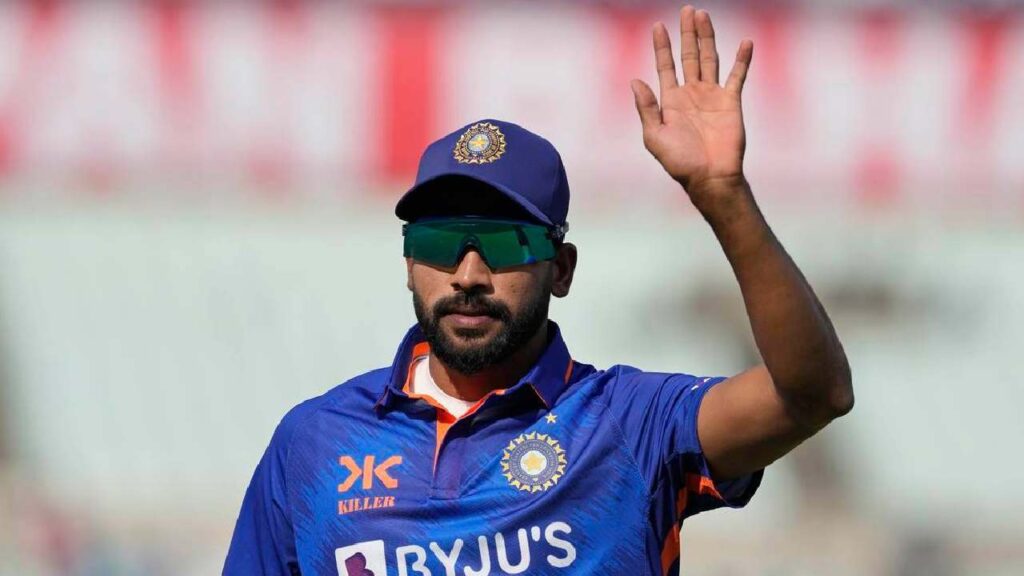He has been India’s most influential fast bowler in Tests, ODIs, and T20Is over the last 12 months.
Mohammed Siraj displayed his impatience at the Eden Gardens, which had been unused for nearly 30 overs. He would fret and fidget near his exiled station at deep square-leg, strike up a conversation with the ball boys, grin and grimace, wave randomly at his captain Rohit Sharma for no discernible reason, shadow-bowl, talk to himself, slap the side of his head, carve out imaginary angles with his hands, and barge into an uninvited mid-pitch conversation among the brains-trust. Finally, when Sharma summoned him for the 40th over, he smiled broadly and dashed to the crease.
He simply does not want to stop bowling, as if he is unconcerned about the workload he is carrying as the lead bowler in this format, as if he is in such divine bowling space that he does not want to go un-bowled, or under-bowled. His joy in bowling spills over into his demeanour.
Siraj’s emotions are so raw that you could read his mind just by watching his body, or more specifically, his speed along the ground, the way he explodes into his run-up, runs through his run-up, the gather and the leap, the whir of the shoulders during the release, and the smooth landing. When he’s in rhythm, he’s smooth and bristling; when he’s not, he staggers and stutters, occasionally stops in his run-up, occasionally loses his footing, remeasures his steps, and shakes his head in rage.

The latter Siraj has barely appeared in the last year. It’s been a season of resurgence for him, a time when he’s moved away from the shadows of Jasprit Bumrah and Mohammed Shami to cast his own long shadow on the game. He has progressed from the spunky sidekick to the lead man during a period in which Bumrah, India’s gun bowler, has spent more time on the physio’s table and in rehab rooms, and Shami has battled inconsistency in Tests and profligacy in ODIs.
It would not be an exaggeration to say that Siraj has been the country’s most influential fast bowler in Tests, ODIs, and, when given a chance, T20Is since his return from a hamstring injury sustained in Johannesburg (8-1-41-6 reads the combined analysis of his last two T20Is). It’s possible that nothing gives him more satisfaction than bowling with the red ball, as he admitted in Bangladesh; it’s also possible that without the T20 platform provided by the IPL, he would have withered unnoticed, but it’s the white ball in 50-over cricket that has brought out the best in him.
Read Also: In The Hockey World Cup, India will Face a Bazball-Inspired England
Siraj has been India’s most successful, economical, and influential bowler since his ODI return last February against the West Indies in Ahmedabad. In 17 One-Day Internationals, he has 29 wickets at an average of 21.51, an economy rate of 4.63, and a strike rate of 27.8. Shami is a good point of comparison; in his last 17 ODIs, he has 26 wickets but has also bled 6.24 runs per over, with strikes coming every 32.3 balls and costing 33.69 runs each. Siraj has recently outperformed Bumrah, who had only 18 wickets at an average of 38.16 and an economy rate of 5.16 in his previous 14 ODIs.
Possibility of a New Ball
As a result, Siraj provides more fire as well as thrift, bark as well as bite. Both characteristics had rarely coexisted in the immediate aftermath of his restoration. In comparison, India had conceded as many as seven 100-plus partnerships for the opening wicket in the 17 games preceding Siraj’s reentry, following a disastrous debut in 2019. Since assuming new-ball responsibilities, no openers have managed a three-figure-plus stand. Ultimately, it comes down to how well a team bowls with the new ball, but it’s no coincidence that India has used the new ball more effectively with Siraj around.
The first couple of overs with the white new ball are his game. It either swings or it doesn’t, and you either get the breakthrough or you don’t. During that time, Siraj processes the wicket, measures the batsmen, and determines the lengths that are appropriate for the surface. Siraj will take advantage of any hint of assistance, a drop of moisture, or an iota of movement. His out-swinger begins with a wicked guffaw. His wobble-seamed off-cuts begin to grin devilishly.
Even if he is only providing minor assistance on the surface, he makes the ball use intimidating language. He hit back of length, extracted away-movement off the seam, and hurried and hassled batsmen with the lift he generated, as he did at Eden Gardens. Siraj is not a traditional hit-the-deck bowler; instead, he prefers fuller and longer lengths. He is not too tall to extract unsettling bounce, and his bustling action would lead batsmen to believe he doesn’t do much bounce. Except he does, albeit with a slightly higher point of release and greater ferocity in his action. But that’s all the information he provides. Batsmen are taken aback, they are a fraction of a second slower to respond, and they are caught in a bind. Siraj takes advantage of this quandary. As a result, a short ball may be a more deceptive weapon in the hands of someone who is not expected to bowl one rather than one who uses it as his main ball.

Similarly, he is a skilled length manipulator. You can see how subtly he changes his length in the last two games against Sri Lanka, from full-length to good-length and back-of-length. Avishka Fernando’s dismissal is instructive. He bowled a full-length ball, then a good-length one, and then reduced the length by a fraction, possibly by a decimal. Fernando assumed the ball could be driven. It wasn’t, and the ball snaked back through the space between his bat and pad, rattling the stumps.
Read Also: Croatia vs Brazil: QuarterFinal Battle of FIFA Worlcup 2022 Qatar
The captain, like Bumrah, could bowl to him at any point in the game and expect a wicket or an intense, tight spell. He transforms into an entirely different bowler in the middle overs, a heavy-length-banging enforcer-kind, and shape-shifts into a yorker-spewing death-over destroyer. That his abilities go unnoticed is a testament to the aloofness of the 50-over format, or it could be masked by the energy he expends on the field. All of his theatrics, bagful of celebrations, intensity, and vibrancy appear to be a thin veneer over his unrivalled craft.
However, as impressive as he has been, a close eye should be kept on his workload. With Bumrah’s return seeming further away than ever, Siraj would be India’s primary cross-format bowler. He has played in four of the seven Tests, 17 of the 26 ODIs, four T20Is, and the IPL in the last year alone. He has a busy season ahead of him, including all four Tests against Australia, the entire IPL, and the ODIs leading up to the World Cup. His workload should be carefully monitored and managed so that he does not become fatigued or injured. But, in his current condition, he would say he does not want to stop bowling. That he wants to bowl every ball he can after the season in which he emerged from the Bumrah-Shami shadow and spread his own.




